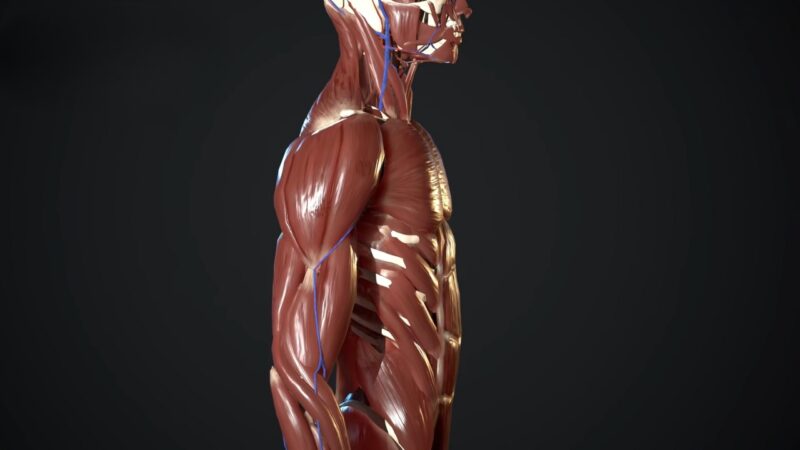Ever felt like you’re battling an invisible enemy within your own body? That could be psoriatic arthritis. You’re not alone, it’s more common than you’d think.
This journey will help you recognize its elusive symptoms, understand how it affects your body, and unveil the role genetics play. You’ll learn why early diagnosis is crucial and explore various treatment options.
In understanding this condition, you’re taking the first step in reclaiming control over your health.
Understanding Psoriatic Arthritis
The journey into understanding your psoriatic arthritis begins with recognizing the symptoms and how they affect your body. This type of arthritis is a chronic, inflammatory disease that often goes hand in hand with psoriasis, a skin condition.
The most common symptoms are joint pain, swelling, and stiffness, but you may also experience skin rashes and nail changes. It’s crucial to pay attention to these signs because early detection can lead to more effective treatment.
Understanding the cause of your symptoms is the next step. Psoriatic arthritis occurs when your body’s immune system begins to attack healthy cells and tissues. The abnormal immune response causes inflammation in your joints and an overproduction of skin cells. While there’s no cure, the condition can be managed with the right treatment plan, which might include medication, physiotherapy, and lifestyle changes.
Identifying Key Symptoms
Building on what you’ve learned about psoriatic arthritis, it’s crucial to delve deeper into understanding your symptoms, so you’re better equipped to manage your condition.
Psoriatic arthritis often manifests as pain, stiffness, and swelling in and around your joints. It’s not uncommon to experience accompanying fatigue, which can exacerbate these physical symptoms.
But it doesn’t stop there. Psoriatic arthritis can also present itself through changes in your nails, such as pitting or separation from the nail bed. You may notice red patches of skin adorned with silvery scales, a telltale sign of psoriasis.
Furthermore, symptoms aren’t always consistent. You might experience periods of intense flare-ups, followed by times of remission where symptoms fade or even disappear.
To better understand your condition and gauge how well you’re managing it, consider taking this brief quiz from My Psoriasis Team. This resource can help you track your symptoms and discuss them more effectively with your healthcare provider. To learn more click here.
Remember, early detection is key to managing psoriatic arthritis effectively. You’re the best judge of your body’s changes, so don’t ignore what it’s telling you. If you identify these symptoms, especially if they’re persistent, seek medical advice promptly.
It’s not just about getting the right treatment; it’s about regaining control of your life. Remember, knowledge is your secret weapon in this journey.
Body Systems Affected
In your battle against psoriatic arthritis, it’s vital to understand the far-reaching effects it can have on various body systems. This chronic disease doesn’t just affect your joints; it can impact a wide range of bodily functions.
Primarily, your immune system is affected. Your body mistakenly attacks its own cells, causing inflammation and pain. This isn’t a localized issue; your entire immune system is on red alert, which can lead to general fatigue and malaise.
Your integumentary system, specifically your skin, is another direct target. Psoriatic arthritis often presents with psoriasis, leading to red, scaly patches that can be itchy and painful. Moreover, your musculoskeletal system suffers, as the disease directly attacks your joints, causing swelling, stiffness, and discomfort.
Lastly, your cardiovascular system may also experience the ripple effects of psoriatic arthritis. Studies suggest a higher risk of heart disease and stroke for individuals with this condition.
Understanding how psoriatic arthritis affects these systems can help tailor your treatment plan. Remember, you’re not just treating arthritis, you’re managing a condition that reaches far beyond your joints.
The Role of Genetics
Grasping how psoriatic arthritis impacts your body, you might now be curious about the role genetics play in this complex condition. Psoriatic arthritis isn’t purely genetic, but your genes can make you more susceptible. You’re more likely to develop the condition if a close relative has it.
Scientists have identified specific genes, such as HLA-B27 and IL23R, linked to psoriatic arthritis. However, having these genes doesn’t necessarily mean you’ll get the disease.
It’s a complex interplay between your genes and environmental factors, like infections or physical trauma. This means that even if you have the genetic markers, you won’t necessarily develop psoriatic arthritis unless certain environmental triggers are present.
Understanding your genetic risk can help manage your condition better. If you’re aware you have a genetic predisposition, you can be proactive about your health. You might engage in preventative behaviors, like maintaining a healthy weight and avoiding injuries, to reduce your risk. Furthermore, knowing your genetic makeup can also help your healthcare provider tailor your treatment plan.
Importance of Early Diagnosis
Now that you’ve got a grasp on the role of genetics in psoriatic arthritis, it’s crucial to understand the importance of an early diagnosis. A timely diagnosis can be your key to managing the disease effectively and keeping its impact on your life minimal.
Here are a few reasons why an early diagnosis is so important:
Reduction of Symptoms
- An early diagnosis allows for prompt treatment, which can reduce the severity of your symptoms.
- You might even be able to avoid some symptoms altogether with early intervention.
Prevention of Joint Damage
- Psoriatic arthritis can cause irreversible joint damage.
- The sooner you start treatment, the less likely you’re to experience this damage.
Improved Quality of Life
- Often, the disease can impact your ability to perform everyday tasks.
- Early diagnosis and treatment can help maintain your quality of life.
Don’t let the fear of diagnosis deter you. The earlier you get a diagnosis, the sooner you can start on the path to managing your psoriatic arthritis effectively. Remember, knowledge is power!
Available Treatment Options
After you’ve understood the importance of early diagnosis, it’s time to dive into the various treatment options available for managing psoriatic arthritis effectively. Your healthcare provider will likely recommend a combination of treatments tailored to your specific needs and symptoms.
Nonsteroidal anti-inflammatory drugs (NSAIDs) can help alleviate pain and reduce inflammation. In more severe cases, disease-modifying antirheumatic drugs (DMARDs) might be prescribed. These slow the progression of the disease and help prevent joint damage. Biologic agents, a subclass of DMARDs, target specific elements of the immune system to control inflammation.
Topical treatments, such as creams and ointments, can relieve skin symptoms. Phototherapy, where your skin is exposed to ultraviolet light under medical supervision, can also be beneficial.
Regular physical activity and exercises can help keep your joints flexible. A balanced diet and maintaining a healthy weight can further contribute to managing your symptoms.
Conclusion
As your journey unveils, remember, psoriatic arthritis isn’t just about your skin. It’s a tale woven deep into your genes, echoing through your body systems. Time is your ally, early detection a game-changer. With treatment options aplenty, the last chapter of your story is unwritten.
So, don’t just scratch the surface of your symptoms. Dive deeper. The path to understanding might be challenging, but it’s worth every step.
Related Posts:
- What Is Dual Diagnosis: Unveiling the Truth Behind…
- What Is Schizophrenia? Symptoms, Diagnosis, and Management
- OCD 101: The Signs and Symptoms of…
- Symptoms, Causes and Effects of Chronic Depression:…
- How to Start Your Self Care Journey in 2024 - 10…
- 5 Best Meditation Frequencies in 2024 - Start Your Journey

















